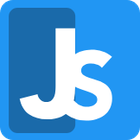
Dabblet
Dabblet is an interactive online code playground designed specifically for experimenting with CSS, HTML, and JavaScript. It provides a live preview of your code as you type, making it an excellent tool for web developers to test snippets and share their work.
About Dabblet
Dabblet offers a streamlined environment for exploring the interplay between HTML, CSS, and JavaScript without the need for local setup. It prioritizes a quick feedback loop, allowing you to see the impact of your code changes instantly. This real-time rendering makes it ideal for learning, prototyping, and debugging front-end code snippets.
Key features include:
- Live Code Preview: See your code rendered in real-time as you type.
- Code Sharing: Easily save and share your code creations with others.
- Syntax Highlighting: Improves code readability and helps identify errors.
- Code Completion: Provides suggestions to speed up your coding process.
- Auto-Save: Your work is automatically saved, preventing loss of progress.
- Anonymous Usage: No account is required to start using Dabblet.
Dabblet's focus on simplicity and immediacy positions it as a valuable tool for web developers of all skill levels, from beginners learning the ropes to experienced professionals quickly testing ideas or sharing code snippets for collaboration or demonstration purposes. Its web-based nature means it's accessible from any device with a modern browser, offering flexibility and convenience.
Pros & Cons
Pros
- Excellent live preview for rapid feedback on code changes.
- Easy to use and requires no installation.
- Simple and effective code sharing feature.
- Anonymous usage is possible, no account needed.
- Ideal for testing small HTML, CSS, and JavaScript snippets.
Cons
- Limited to front-end web development (HTML, CSS, JavaScript).
- Lacks advanced features found in full IDEs (e.g., debugging beyond console, version control integration).
- Does not support server-side languages or complex build processes.
What Makes Dabblet Stand Out
Instant Live Preview
Immediately see the results of your HTML, CSS, and JavaScript changes as you type.
Focus on Front-End Development
Specifically designed and optimized for experimenting with web front-end technologies.
Features & Capabilities
8 featuresExpert Review
Dabblet Software Review
Dabblet is an established online code playground primarily focused on aiding web developers in experimenting with HTML, CSS, and JavaScript. Its core strength lies in its simplicity and directness, offering a quick and efficient way to test code snippets and visualize their output in real-time.
Upon accessing Dabblet, the user is presented with a clean and intuitive interface. The layout is typically split into multiple panes: one or more editors for HTML, CSS, and JavaScript, and a live preview area. This structure facilitates a clear workflow where code modifications are immediately reflected in the output, a crucial feature for rapid prototyping and debugging.
The code editor provides essential features such as syntax highlighting, which significantly improves code readability and helps in identifying potential errors. While not as feature-rich as a full-fledged IDE, it offers a comfortable environment for writing and editing code snippets. The inclusion of code completion, though perhaps basic compared to advanced development environments, is a welcome addition that helps speed up the coding process.
One of Dabblet's most valuable aspects is its live preview functionality combined with auto-refresh. This feature eliminates the need to manually save and refresh a browser window, creating a seamless and fluid coding experience. This immediacy is particularly beneficial when fine-tuning CSS styles or experimenting with JavaScript interactions. The rendering engine appears robust, accurately displaying standard HTML, CSS, and JavaScript outputs.
Beyond just writing and testing code, Dabblet offers a straightforward mechanism for sharing your creations. Users can save their 'dabbles' and obtain a persistent URL. This capability makes it an excellent tool for:
- Sharing code examples in online forums or communities.
- Demonstrating specific front-end techniques.
- Collaborating on small code snippets.
- Creating interactive documentation examples.
Dabblet is entirely web-based, meaning there is no software to install. This accessibility makes it available from virtually any device with an internet connection and a modern web browser. The fact that it can be used anonymously without requiring an account is a significant advantage for users who want to quickly test something or share a snippet without the overhead of registration.
However, it is important to note that Dabblet is explicitly designed for front-end development. It does not natively support server-side languages like Node.js or backend frameworks. While you can include external JavaScript libraries within your dabble, the environment is not suited for complex application development or projects requiring server-side processing, database interactions, or extensive build processes.
The feature set, while sufficient for its intended purpose, is relatively focused. It lacks more advanced features found in comprehensive Cloud IDEs or local development environments, such as integrated debugging tools beyond basic console logging, version control integration, or support for preprocessors like Sass or Less (though workarounds using external links might be possible). For users needing a more powerful or versatile development environment, Dabblet would serve as a supplementary tool rather than a primary one.
In summary, Dabblet excels as a specialized tool for frontend developers. Its strengths lie in its simplicity, live preview, and sharing capabilities. It's an ideal platform for quickly testing HTML, CSS, and JavaScript snippets, learning new techniques, or creating shareable code examples. While it is not a replacement for a full development environment, its efficiency and ease of use make it a valuable asset in the web developer's toolkit for specific tasks.










